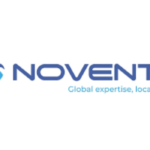A big change in 2022
Hybrid working is here to stay. ‘Work from home’ may have gone from an order to an option. Blanket instructions to continue working remotely are coming to an end, and we’re seeing people returning to offices. The question is, ‘How often?’ and ‘How does that impact how we work in 2022?’ While ‘work-from-home’ was seen as a perk and potentially less productive a few years ago, today’s mindset accepts it as the norm. It’s crucial not to treat it as a novelty, but tweak processes to facilitate effective hybrid working. Until now, offline policies may have been shoehorned into the online world – which isn’t a long-term option.
There remains a portion of employees that believes working from home has been uncomfortable or much worse than the office in terms of distractions, collaboration, camaraderie and fear of missing out. According to a Loom Survey, the good news is that remote technology has led to faster decision making, more effective meetings and less unnecessary chit chat to drive more productive remote collaboration.
However, one of the biggest challenges was finding relevant information. The data, knowledge and resources to do the job better, especially when working independently, with the information scattered all over the place and the amount of effort taken to track it down are serious pain points. We’re seeing the separation of office perks and the physical office, meaning benefits are no longer intrinsically linked to the buildings in which we work. Therefore, if we’re aiming for happier employees in 2022, there needs to be a mindset shift when it comes to benefits. People want discounts on the things they enjoy outside of work. They want to work less and travel more, and they also want flexibility or recognition as they succeed in their role. They crave -and should be offered more wellbeing and mental health benefits or support at work! The Loom study also revealed that 74 per cent of employees think their pay should increase if the employer saves on office costs, while more than half would like a contribution to household bills.
Therefore, when a company does cut down on office space or changes the way it works, it’s crucial to communicate the same to the team with utmost care and consideration.
“Benefits are no longer intrinsically linked to the buildings in which we work”
Will internal mobility help in retention
To retain people and help them develop, internal mobility needs to re-emerge as an HR priority. It is good for business and good for engagement, and there are some key reasons why we need to embrace it now:
Filling skills gaps
In 2020, the World Economic Forum forecast that 40 per cent of current workers’ core skills are expected to change in the next five years, and 50 per cent of employees will need reskilling by 2025. When we already have people on board who want to learn, it doesn’t make sense to let them leave and face tight and challenging recruitment markets to replace them.
Tackling the resignation wave
The current job market is fluid. People are increasingly quitting roles, looking for new challenges and opportunities. To retain the existing talent, one needs to show the organisation can help them achieve whatever they want, and this starts by offering the opportunity to change roles and upskill. Oftentimes, the problem is lack of visibility into internal openings. It is important all vacancies are visible internally, clearly showing the skills needed and the opportunities for future growth.
“The biggest change hasn’t taken place in offices, but in people’s mindset”
Using organisation-wide talent data
In the past, employee data used to be siloed, kept by managers who didn’t want to lose their best people to other parts of the business. Now, HR tech systems create and store data such that anyone can access existing employees’ performance, skills, capabilities, and learning data in one place. Using AI, true talent intelligence enables workers to be moved effectively around the business, allowing them to develop in areas where their skills and capabilities align, and in which they may have a true passion to learn more.
Supporting a culture of recognition
There’s one thing we’ve learned over the last two years, it is that connection matters; and key to creating connections and engagement is having a culture of recognition. One of the strongest messages one can give is, ‘I believe in you’. Believing in people means investing in them and offering opportunities to take on new challenges. External hiring can often damage the bond employees have with their teams or leaders, especially if they interpret it as a sign that their abilities and hopes for future progression are not being recognised. By embracing a culture of internal mobility, organisations show they have faith in their people and will support them in achieving their goals and reaching their potential.
Value our content... contribute towards our growth. Even a small contribution a month would be of great help for us.
Since eight years, we have been serving the industry through daily news and stories. Our content is free for all and we plan to keep it that way.
Support HRKatha. Pay Here (All it takes is a minute)




































